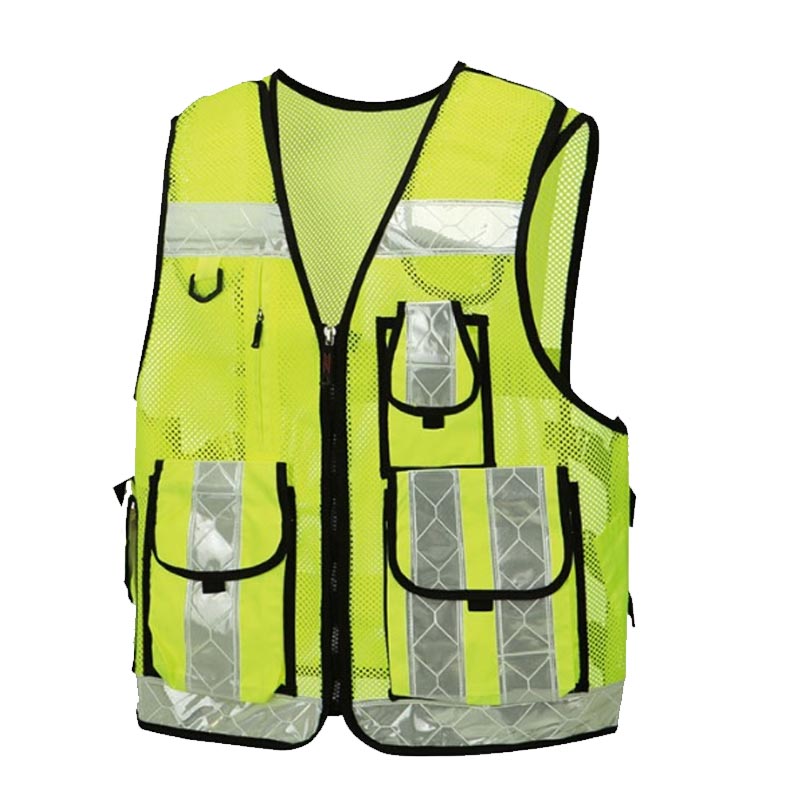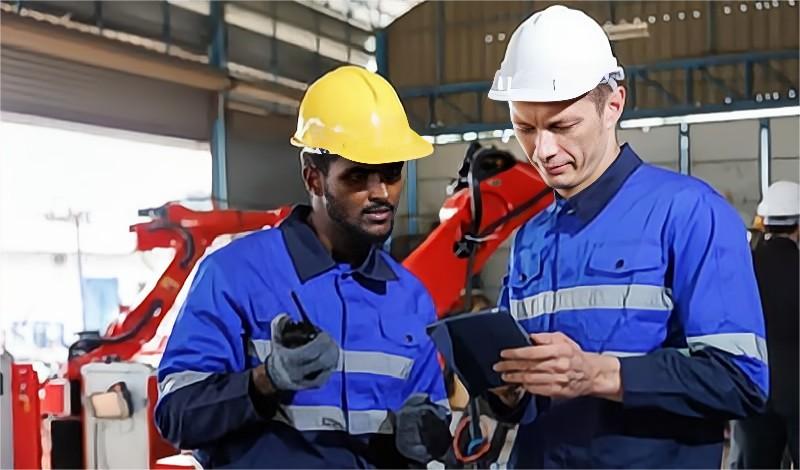差三张图:主图用标识过的水洗标图片,三张水洗标的示意图和一张水洗标图。
When supplying high-visibility (Hi-Vis) workwear to your clients, you might frequently encounter a vital term: the ANSI garment label. But what does it signify? How can it help you assure your clients about the quality and compliance of the safety clothing you provide?
The American National Standards Institute (ANSI) sets the standards for Hi Vis workwear. The ANSI garment label on a piece of clothing signifies that it meets these rigorous standards, providing assurance of its quality and compliance.
Let’s explore the specifics of ANSI garment labels, their importance in the Hi-Vis workwear industry, and how they can enhance your value proposition as a B2B supplier.
What is Hi Vis Workwear?
Hi-Vis workwear is a category of personal protective equipment (PPE) designed to enhance the visibility of workers in low-light or high-risk environments. The clothing, which includes vests, jackets, and trousers, usually features bright neon colors with reflective strips.
These items are essential in industries such as construction, transportation, and logistics, where visibility is critical for safety. According to the Bureau of Labor Statistics, appropriate Hi Vis workwear can significantly reduce workplace accidents.
Understanding ANSI 107 Hi Vis Clothing
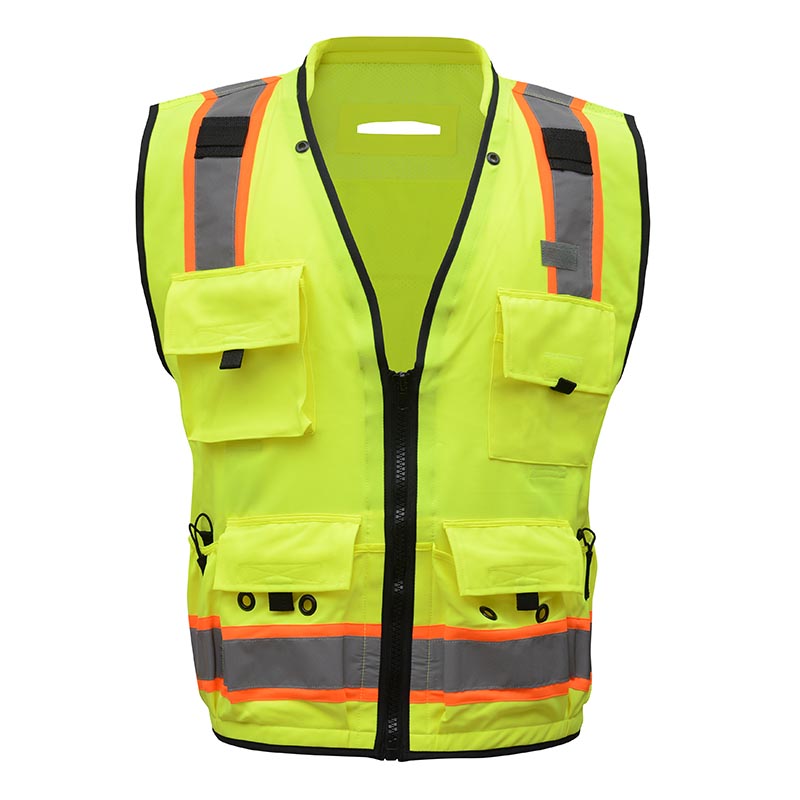
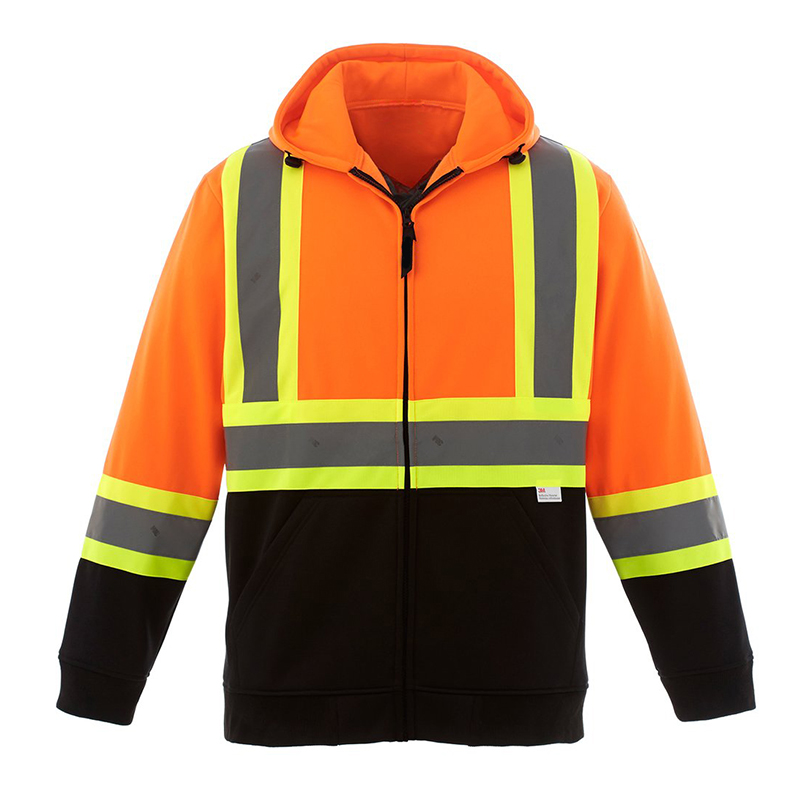
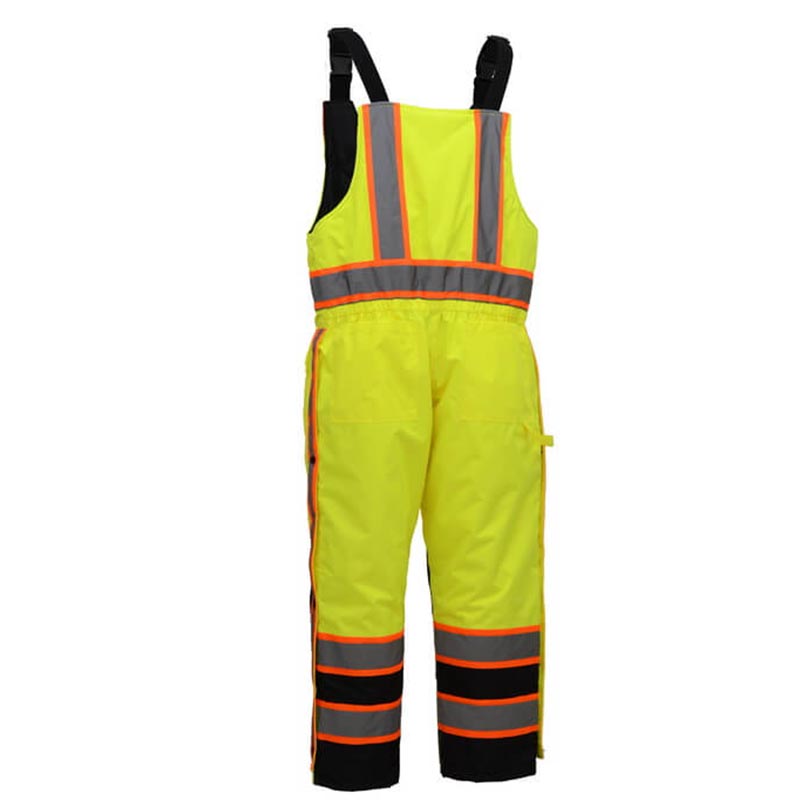
The American National Standards Institute (ANSI) and the International Safety Equipment Association (ISEA) developed the ANSI/ISEA 107 standard for high-visibility clothing. The standard includes guidelines for the design, performance specifications, and use of high-visibility and reflective apparel, including vests, jackets, bib/jumpsuit coveralls, trousers, and harnesses.
The ANSI 107 Hi-Vis clothing is designed to make the wearer visible in all conditions, whether in daylight, under streetlights, or in low-light situations, thereby minimizing the risk of accidents.
Who Needs to Wear ANSI 107 Hi Vis Clothing?
ANSI 107 Hi-Vis clothing is required for workers in high-risk environments where visibility is crucial. Here are some of the industries where these garments are typically necessary:
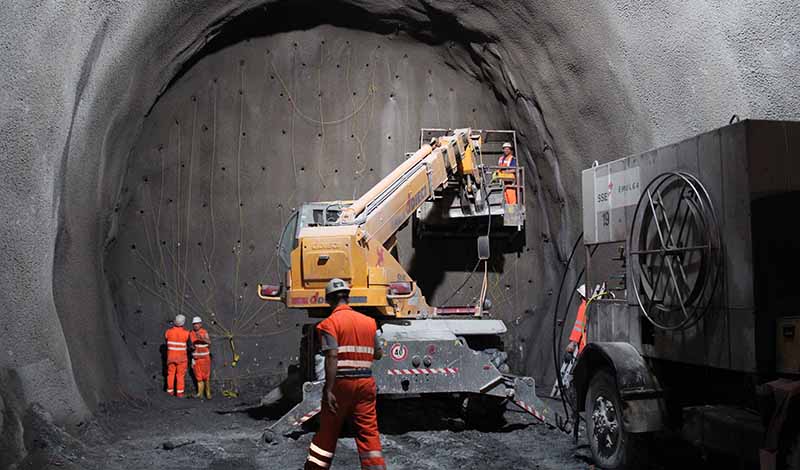
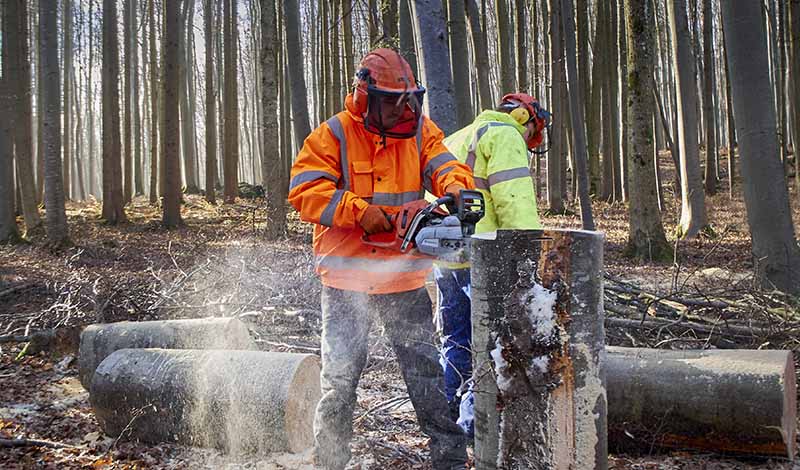

- Construction: Workers on construction sites are often exposed to heavy machinery and potential hazards from moving vehicles. High-visibility clothing helps ensure they can be seen by equipment operators.
- Transportation and Logistics: Workers involved in loading and unloading operations, particularly in low light conditions, need to wear Hi-Vis clothing to be visible to forklift and crane operators.
- Emergency Response: First responders and rescue workers are often required to work in challenging lighting conditions and need to be easily visible.
- Roadway Operations: Workers involved in road construction, maintenance, or towing operations are exposed to passing traffic, making Hi-Vis clothing a necessity for their safety.
- Railway Workers: Given the high risk associated with working near railway tracks, railway workers are typically required to wear Hi-Vis clothing.
It’s important to note that the specific Hi-Vis clothing required can vary depending on the specific conditions and risks associated with the job. The ANSI/ISEA 107-2020 standard outlines three different garment types (Type O, R, P) and four performance classes (Class 1, 2, 3, E) to cater to different work environments and risk levels.
Why is ANSI Certification Crucial?
ANSI certification marks a quality product that complies with industry standards. When you offer ANSI-certified Hi Vis workwear, you’re assuring your clients that these products have undergone rigorous testing for visibility, durability, and colorfastness.
For example, the ANSI/ISEA 107-2020 standard outlines the requirements for high-visibility safety apparel that can visually signal the user’s presence. As stated by the International Safety Equipment Association, adherence to these standards ensures that workers remain visible in all conditions and against any background.
Understanding the Information on the Label: An In-depth Guide
Labels on Hi-Vis garments are more than just tags. They carry crucial information about the garment’s compliance with safety standards, its performance class, and its suitability for various work environments. As a B2B supplier, understanding this information can provide you with a competitive edge, enabling you to offer your clients knowledgeable guidance on their Hi Vis workwear needs.
Let’s dive deeper into the key components you’ll find on a Hi-Vis garment label.
插入水洗标图片
ANSI/ISEA 107-2020 Compliance
This indicates that the garment meets the requirements of the ANSI/ISEA 107-2020 standard for high-visibility safety apparel. This standard, developed by the American National Standards Institute (ANSI) and the International Safety Equipment Association (ISEA), includes guidelines for design, performance specifications, and the use of high-visibility and reflective apparel.
Compliance with this standard is a testament to the garment’s quality, ensuring that it is designed to provide adequate visibility in different light conditions, thus minimizing the risk of accidents.
Performance Class
The performance class (Class 1, 2, 3, or E) denotes the level of visibility provided by the garment.
- Class 1 offers the minimum level of visibility and is suitable for off-road environments and workers who are not exposed to high-speed traffic.
- Class 2 provides a moderate level of visibility and is intended for workers who need greater visibility in inclement weather and are exposed to higher-speed traffic.
- Class 3 offers the highest level of visibility and is designed for workers in high-risk environments with high-speed traffic and/or reduced sight distances.
- Class E applies to pants or shorts and is intended to be worn with either Class 2 or Class 3 tops to achieve a Class 3 ensemble.
Type
The garment type (Type O, R, or P) specifies the environment or hazard for which the garment is designed.
- Type O (Off-road) is intended for workers not exposed to traffic.
- Type R (Roadway) is for workers exposed to traffic and working against complex backgrounds during daytime and nighttime conditions.
- Type P (Public Safety) is for emergency and incident responders and law enforcement personnel who are exposed to struck-by hazards in the roadway and off-road environments.
Manufacturer Information
The label should also contain information about the manufacturer, helping you trace the origin of the garment and providing an additional layer of assurance regarding the product’s quality.
Size
The size of the garment is indicated on the label, allowing users to select a garment that fits them properly. A well-fitted Hi Vis garment not only enhances comfort but also ensures optimal visibility and safety.
Garment Pictogram
The garment pictogram is a graphic representation that shows the type and class of the garment. It’s a quick, visual way to understand the garment’s classification, complementing the textual information on the label.
Model Number
The model number on the label helps to identify the exact design and style of the garment. This number can be used to reorder the same garment or to look up additional information about the garment’s features.
Flame Resistance
If the garment is designed to be flame-resistant, this will be indicated on the label. Flame-resistant garments are designed to resist ignition, prevent the spread of flames, and self-extinguish almost immediately upon removal of the ignition source.
插入水洗标图片
Care Instructions
Care instructions guide users on how to properly maintain the garment to preserve its high-visibility features and prolong its lifespan. These instructions might include washing and drying guidelines, restrictions on the use of bleach, or recommendations for professional cleaning.
Disposable Garment Instructions
If the garment is intended to be disposable, the label will provide instructions for safe and proper disposal. Following these guidelines is crucial to ensure environmental responsibility and compliance with disposal regulations.
Locating the Label on Your Hi-Vis Garments
The label on Hi-Vis garments is typically found on the inside of the apparel, either near the collar or along the side seam. It should be easily accessible and legible for verification purposes. The label will contain essential information, including the garment’s performance class, type, and the standard it complies with (such as ANSI/ISEA 107-2020).
If you have difficulty locating the label or are unsure whether you have found the correct one, you can consult with the manufacturer or supplier for guidance.
The Assurance of ANSI Certification
The presence of an ANSI garment label assures your clients that the Hi Vis workwear you provide has passed rigorous testing for visibility, durability, and colorfastness.
ANSI/ISEA 107-2020, for instance, is the standard for high-visibility safety apparel, ensuring that workers can be seen in all light conditions and against any backgrounds. As the International Safety Equipment Association states, adhering to these standards ensures worker safety.
The Role of the ANSI Garment Label in Client Guidance
As a B2B supplier, you must guide your clients in choosing the right Hi Vis workwear for their work environments and potential hazards. The ANSI garment label serves as a guide in making these decisions.
Remember, a higher performance class doesn’t always mean the best choice for all situations. For example, a Class 3 garment might be overkill in a low-risk environment, while a Class 1 garment might be inadequate for a high-risk job.
At Lino Safety, with 16 years of experience in the industry, we can help guide you and your clients in understanding these labels and making informed decisions.
Staying Updated with ANSI Standards
ANSI standards for Hi Vis workwear are updated periodically. It’s essential to stay updated with these changes to ensure the products you offer your clients remain compliant. Resources like the American National Standards Institute and the International Safety Equipment Association websites provide up-to-date information.
The ANSI garment label is more than just a tag on Hi Vis workwear; it’s a testament to the garment’s compliance with stringent industry standards. Understanding and explaining these labels to your clients can enhance your value proposition, ensuring you provide top-quality, compliant Hi Vis workwear.
The Importance of ANSI Garment Labels in Building Client Trust
One of the significant challenges in the business, especially in safety clothing supply, is building trust with your clients. Your clients want to ensure they are investing in safety equipment that genuinely protects their workforce. An ANSI garment label on your products provides that assurance.
As a professional supplier, showing your clients that you offer ANSI-certified Hi Vis workwear demonstrates your commitment to quality and safety. It tells them that you prioritize their workers’ safety and are diligent in sourcing your products.
This assurance can significantly enhance your clients’ trust in your business, fostering long-term business relationships.
Leverage Your Supplier’s Expertise
Your supplier’s knowledge and experience can be invaluable in navigating the complexities of ANSI standards and garment labels. A seasoned supplier like Lino Safety(加入内链), with 16 years of industry experience, can provide insights and advice on interpreting ANSI garment labels, assisting you in offering the most suitable Hi Vis workwear to your clients.
Moreover, a reliable supplier ensures that their products always meet the current ANSI standards, providing further assurance of quality and compliance.
Conclusion
The ANSI garment label plays a pivotal role in the Hi-Vis workwear supply chain. It provides a guarantee of compliance with stringent safety standards, helping you build trust with your clients and ensure their workforce’s safety.
As a professional supplier, understanding the intricacies of the ANSI garment label and guiding your clients accordingly can significantly enhance your value proposition. Partnering with an experienced and reliable supplier like Lino Safety further solidifies your stance on delivering top-quality, compliant Hi Vis workwear.
Remember, in the realm of safety, every detail matters. An understanding of the ANSI garment label is not just a step, but a leap towards fulfilling your clients’ trust in you.



